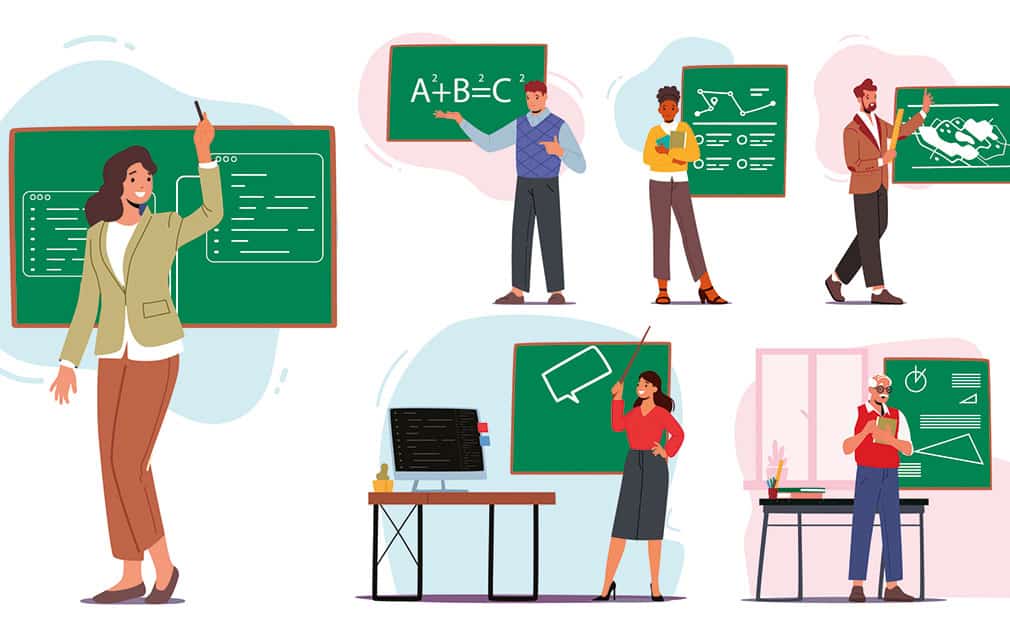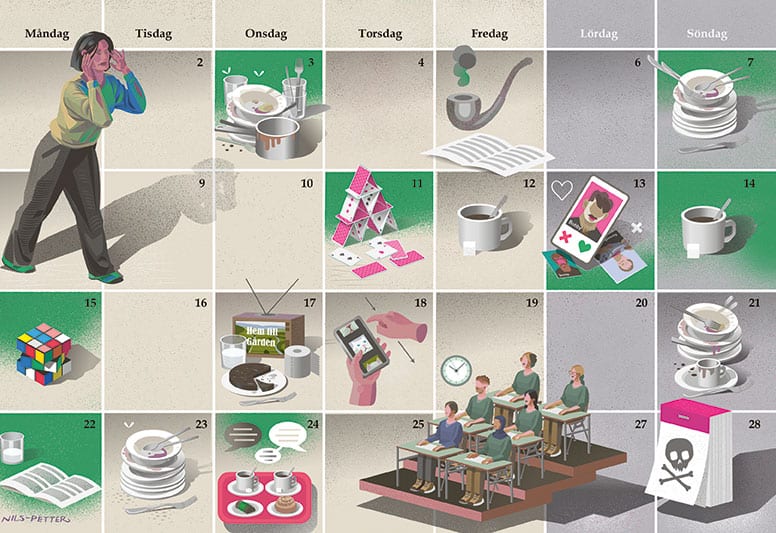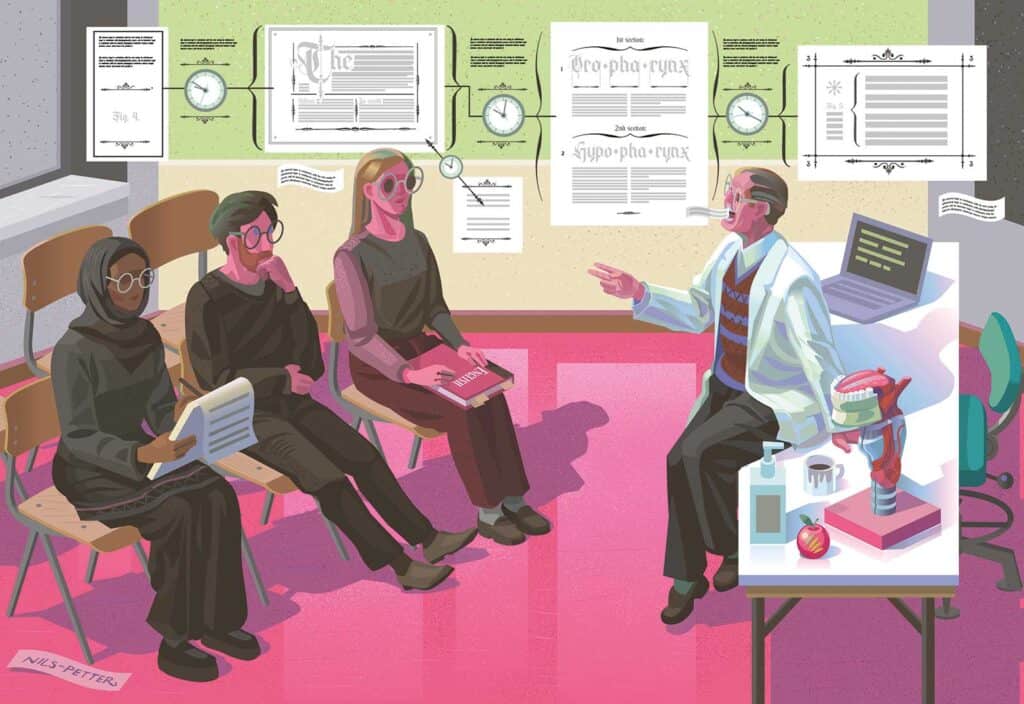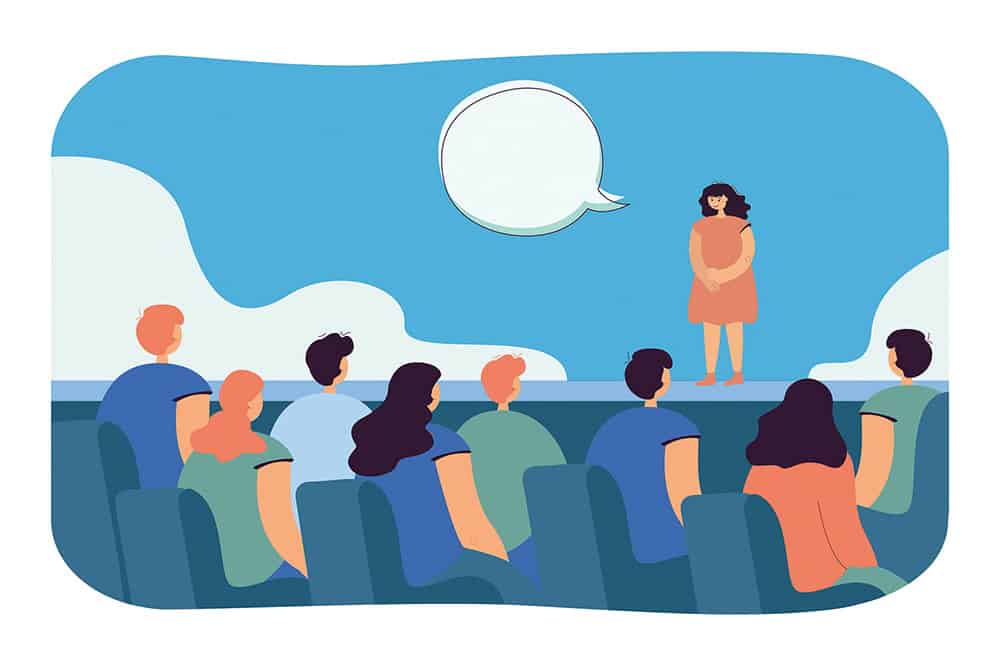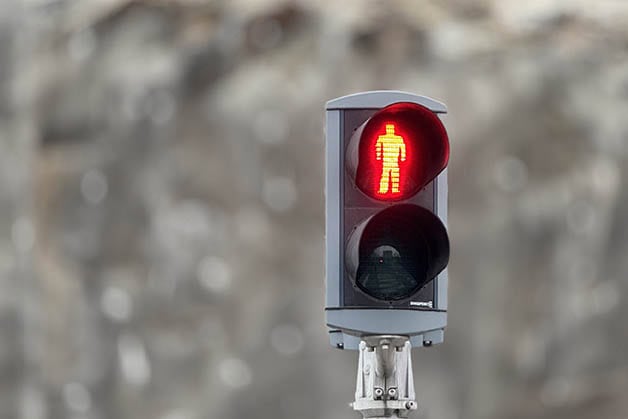If a task can be done by an individual, there is no need for group work, believes Eva Hammar Chiriac. She is a professor of psychology at Linköping University, where she researches group work in the education sector. “You shouldn’t use group work if there is no real purpose and justification for the students to actually have to work together to do the task,” she says.
Her research focuses on what happens when students get together in groups to perform a task rather than on the results of group work. In her research, she observes students in authentic environments.
Hammar Chiriac says that the prerequisites for group work include both cooperation and shared learning. The members of the group need each other and each other’s competence to be able to complete the task. Well-functioning group work requires students with appropriate skills who know what is required and who are willing to focus on the task and contribute jointly.
The most important aspect for the teacher to think about and prepare is the task itself, she says. “The research and my dissertation have confirmed this. The task is the most important factor for determining what kinds of collaboration, work and processes will occur in the group. It needs to be a group-worthy task.”
The task should not be easier for one person to complete on their own, she continues. Instead, it should be designed so that everyone in the group can contribute using their different skills. “The task must be characterised by mutual dependence and individual responsibility.”
“You shouldn’t use group work if there is no real purpose and justification for the students to actually have to work together to do the task”
Margareta Jernås is a docent and educational developer at Gothenburg University. In order for group work to be as effective as possible, it is important to explain its purpose to the students, she says. She agrees that the nature of the task plays a part in how the group work will function. She also points out how complicated group dynamics can be and that the teacher needs to think about focusing more on this, and not just on the subject.
“We mustn’t forget the social aspect,” she says. “That can sometimes be difficult, so the students are not happy with the task or with each other.”
In her professional role, she teaches compulsory higher education pedagogy courses for teachers and doctoral candidates. She also offers optional workshops for teachers about group supervision and group work as a method of learning. She feels that there is more and more discussion about the latter.
“Group work is partly a matter of resources, as we generally get large student groups. But it’s also a method, and there’s plenty of evidence to show that group work can contribute in many positive ways.”
One key to success in planning is explaining to the students why they should do group work, says Jernås. Here, the teacher can talk the students through the curriculum’s learning objectives and link them to group work as a form of learning, based on the course or programme the students are studying.
“If it’s a vocational course, it might for example be about how later in their professional lives they will be in situations where they have to be able to work in teams, deal with conflicts and make collective decisions. Getting students to see which learning goals they can fulfil by collaborating in a group is important,” she says.
So what arguments are there for using group work as a method for learning?
“Seeing learning in a socio-cultural perspective means that you see learning as a process that takes place in interaction with your environment. The socio-cultural perspective means that learning often takes place together with others by participating in joint activities where we communicate and interact,” says Jernås.
“You might think that goes without saying, but there are many studies that show that students wonder what the aim of the task actually was,
In addition to developing the ability to collaborate, group work also provides different perspectives. It can encourage critical thinking and can make students more confident in their role through the social support that the group can provide. Group work can also contribute to clearing up misunderstandings, she believes.
A clear work plan on the part of the teacher creates good conditions for group work. “You might think that goes without saying, but there are many studies that show that students wonder what the aim of the task actually was,” she says.
You also need a set of rules for the group work itself – rules about who should do what, what roles should exist within the group and how to communicate with each other, she adds. “Some people call it a contract.”
Eva Hammar Chiriac agrees. In a “group contract”, the students should determine how they interpret the task and what its purpose is. Different roles within the group, including group leaders if required, as well as norms, rules and expectations of each other as group members are other matters that should be addressed in the contract, she believes. ”It should be a living document rather than something that is just written at the beginning of the course and handed in to the teacher.”
If a dispute arises, the group participants can refer to the contract and see if the work in the group is in accordance with the terms agreed in the contract or if something in the contract needs to be changed during the course of the group work. It is the group that should benefit from having the contract, not the teacher, says Chiriac.
Margareta Jernås says that rules about how to give feedback within the group may also be needed. For example, if students in the tenth semester of the psychology programme are to work together, they are experienced at receiving responses and giving feedback. But in the first couple semesters, students are not as used to receiving feedback. As a teacher, you really need to emphasise that constructive feedback is a developmental strategy for student learning, even if it can be challenging to receive it if it is not positive.
Group size is another thing to consider, Eva Hammar Chiriac points out. The optimum size is six to eight students per group.
Additionally, a university teacher should not just assume that all university students actually know how to work in groups. A good way to get around this is simply to practise working in groups, she believes, for example by starting the course with a short group assignment, which the students then evaluate and learn from together.
6 steps for effective group work
2. Make sure the group members introduce themselves to each other.
3. Have clear guidelines about what the students should do and how long it should take to do it. Be clear about the purpose, whether the group work is the goal or a means to achieve it.
4. Be clear about how the task is to be followed up, assessed and reported.
5. Set aside time for each group to establish a set of ground rules.
6. Give continuous feedback. Be available for guidance and consultation.
Sources: Margareta Jernås, Eva Hammar Chiriac
